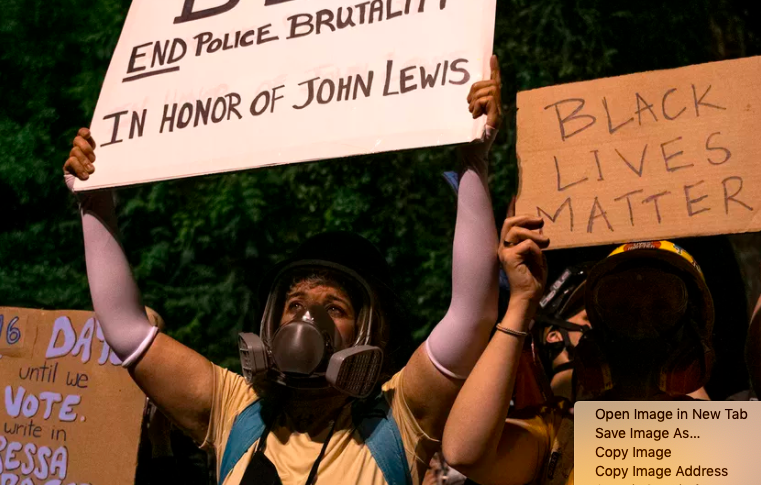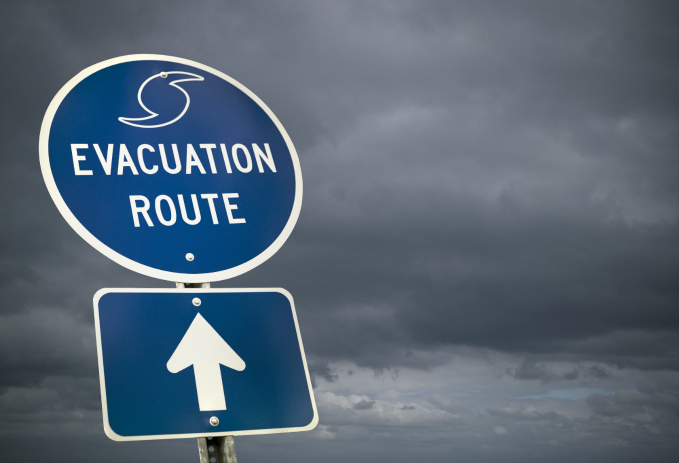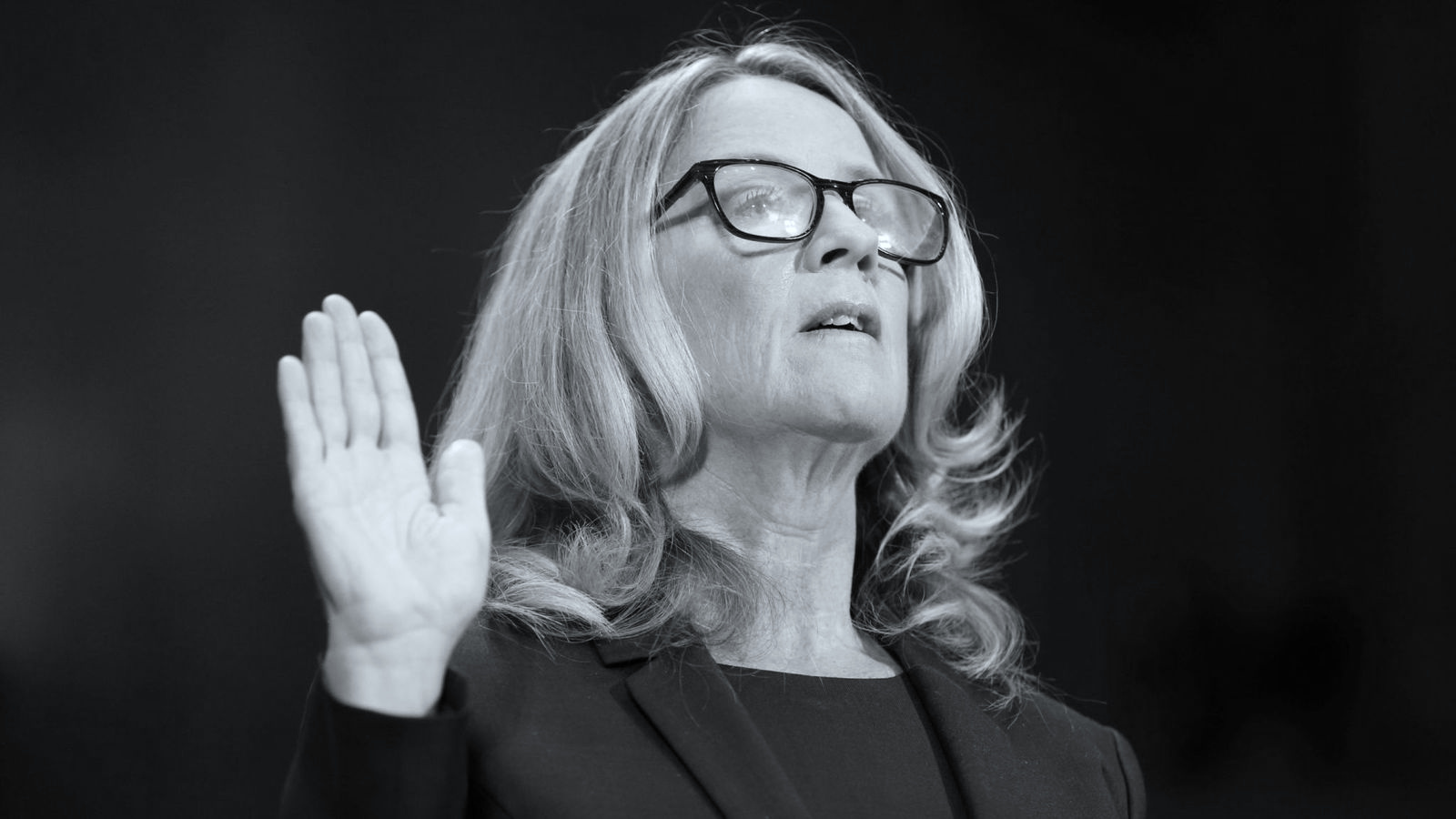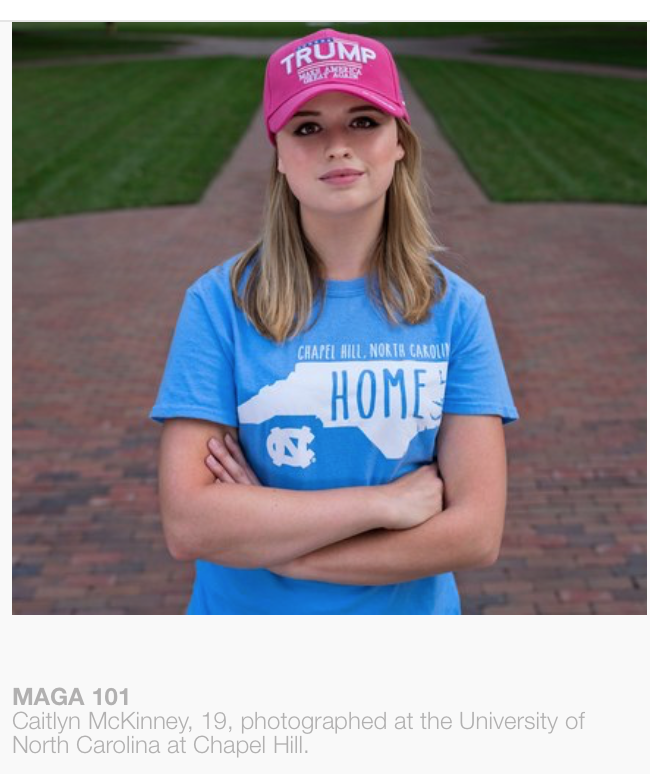Vox: How Portland’s Wall of Moms collapsed — and was reborn under Black leadership
Confluence Daily is your daily news source for women in the know
Source: Vox
By
After the organization’s leader was accused of being anti-Black, thousands of women left the group to join Moms United for Black Lives.
Last Wednesday, the Wall of Moms Facebook group descended into chaos. One woman said a group of Black moms was left unprotected at a rally in downtown Portland, Oregon. Another claimed that group leader Bev Barnum had co-opted Black Lives Matter for her own gain. There were endless threads of comments from women disappointed that the protest group — made up of mothers and grandmothers who had gained international recognition for standing on the front line of the city’s protests — seemed to have lost its way.
The Wall of Moms, at least the original version, was collapsing. It had lasted for all of 10 days.
:no_upscale()/cdn.vox-cdn.com/uploads/chorus_asset/file/21696008/AP_20206397505024.jpg)
When the group assembled on July 18 through a call to action from Barnum on Facebook, the mission was simple: Be physically present for Black lives.Last month, federal agents descended on the city to protect federal buildings, which only intensified the protests that have been ongoing since the police killing of George Floyd. Portland mothers, most of them non-Black, were called on to act as a shield against the tear gas and excessive force that police officers used to terrorize protesters.
But by the middle of last week, many of the mothers in the private Wall of Moms Facebook group, which had garnered nearly 20,000 members, were questioning the direction of the organization, disappointed that it no longer seemed to center Black lives. A number of the moms accused Barnum, who is Mexican American,of only being interested in pressuring federal troops to leave Portland, not in the greater issue of justice for Black lives; Barnum had tried to register Wall of Moms as a business without the approval of fellow Black leaders. (Barnum has not responded to Vox’s request for comment.)
In response, longtime activist Teressa Raiford, who had been providing guidance to Wall of Moms and is the founder of the nonprofit Don’t Shoot Portland — along with two other Black mothers and activists, Demetria Hester and Danialle James — organized under another group: Mothers United for Black Lives. The new group has made it clear that its mission is to address the problems plaguing Portland’s Black communities, like the number of Blackteens recently slain, the damage done by the coronavirus, and a police department that reportedly isn’t working to investigate gun violence.
“We are fighting for liberation, but [Barnum] ended up using Black bodies when she centered herself as an individual and incorporated the Wall of Moms through three agencies. That is violence and doesn’t liberate Black people,” Raiford told Vox.
Raiford, who started Don’t Shoot Portland in 2016 after police arrested her amid the Michael Brown uprisings, was careful to explain that many if not most of the moms in the group have not tried to co-opt the movement.
However, the Wall of Moms is ultimately a cautionary tale of what happens when Black people aren’t centered in a movement that’s about the fight for their lives: “People who are interested in getting involved must realize that they have to take directives from Black leaders and show up through the mutual aid response system,” Raiford said. That means creating not just a wall of bodies but a wall of resources, financial and otherwise, to bolster activists who will put their lives on the line long after Portland is out of the national spotlight.
How Wall of Moms garnered international attention
Wall of Moms began as a response to the federal law enforcement officers who began patrolling the streets of Portland in early July, forcibly snatching anti-racism protesters off the street and detaining them in unmarked vehicles. The incidents, sometimes recorded on video, caused much confusion across the country before the Trump administration announced that it had deployed officers from Border Patrol and other agencies to protect federal buildings amid ongoing protests.
As Vox’s Alex Ward reported, Trump administration officials defended the aggressive tactics, claiming they were necessary to dispel protests led by a “violent mob” of “lawless anarchists.” But demonstrators, who had been on the streets protesting for Black lives for more than 50 days, recognized the presence of the federal officers as a further impingement on their civil liberties. Portlanders, many of whom had never protested before, took to the streets to push back against the federal troops. It was during this moment that the Wall of Moms was born.
By July 19, a group of a few dozen mothers, most of them white and wearing white, were seen being tear-gassed by federal officers.
By July 21, the group of mothers would grow to include thousands of women who showed up at downtown protests clad in yellow shirts and masks, helmets, and goggles, and carrying yellow roses and sunflowers. In videos, the women can be seen marching toward Portland’s Justice Center chanting in favor of Black Lives Matter. In one early video of the group, the women proclaimed, “No cops, no KKK, no racist USA.”
Around the same time, news stories poured out with headlines that read “‘Wall of Moms’ shields protesters from federal agents in Portland” and “Wall of Moms Protects Portland BLM Protesters,” with photos that showed overwhelmingly non-Black women standing in formation linked by the arms. Many of the stories characterized the women as selfless citizens who were eager to stand up and use their bodies to protect the less privileged. Stories characterized the activation as novel, something that would really send a fresh message to the Trump administration.
While most of the mothers were well-intentioned, critics were quick to point out how the women managed to gain international acclaim because of the very privilege they were able to exercise while out on the front lines: whiteness.While whiteness was part of the tactic of getting noticed — many of the mothers were aware that their white bodies would yield attention and were intentional about their positioning at the protests — Black mothers, who have been losing their children to police violence at an alarming rate for decades, have received little attention for their activism.
Keisha N. Blain, an associate professor of history at the University of Pittsburgh, told Vox there are many factors that go into what images capture the public’s interest and attention during social unrest and that it is not uncommon for white activists to receive greater attention for their work, particularly in Black spaces.
“Because many people are still struggling to get people to accept Black Lives Matter, the media often privileges the appearance of white protesters in these spaces. Part of this has to do with the perceived novelty of white participation,” Blain told Vox. “We must also acknowledge that anti-Black racism helps to explain why members of the general public are often more enthralled with white activists in social justice movements — even when Black people are at the forefront of these movements. We should also be mindful of the way the media fuels these racist narratives when journalists choose to focus on the efforts of some and not others.”
According to Blain, groups like Mothers of the Movement, a collective of Black moms whose children have been killed by police officers or by gun violence, “are constantly pursuing this work” but “don’t receive the same kind of visibility and certainly not for a sustained period of time.” In Chicago, for example, Black moms formed Mothers/Men Against Senseless Killings in 2015 to build community through violence prevention and other measures like food security and housing, but have not received the national attention in five years that Wall of Moms did in 10 days.
Wall of Moms organizer Barnum, meanwhile, seemed more interested in marketing the group (at one protest, she told the women to get on their knees for a photo, according to Demetria Hester, a mom leading Moms United for Black Lives; Barnum was also called out for doing too many interviews and not passing the mic to women like Raiford) than solely focusing on Black Lives Matter. Despite publicly announcing that the group’s administration would cede control to Black moms on July 24, five days later, Barnum had announced in the group that Wall of Moms was “now a 501(c)3” and would be “partnering with leaders across the nation.”
Backlash against Barnum was quick, with moms alleging that she co-opted Black Lives Matter for her own profit. Many called on her to step down immediately. In response, Barnum wrote that she didn’t intend to hurt anyone, and that the group will be led by a board made up of Black, Indigenous, and people of color and a BIPOC advisory committee. However, “WOM is a group that supports BLM, but it is not a BLM group,” she wrote. “If that is not good enough for you, please feel free to leave this group. And if you currently volunteer your time, feel free to leave your positions. Again, I am so sorry the 501c3 hurt some of you.”
A number of moms in the group immediately said they were out, citing dissatisfaction with how non-Black women failed to listen to Black leaders. The group’s impromptu communications director, Emma Pattee, when explaining her reason for stepping away, wrote in a Facebook post:
I have been working 20 hours a day for nearly two weeks, unpaid, and going out at night to protest leaving an infant at home because I was under the impression we were in support of Black Lives Matter, and that Black leadership would be brought in ASAP. It has become clear that that is not the plan for Wall of Moms and so I can no longer volunteer my time here and need to find other ways to support BLM. True racial equity depends on non-Black people relinquishing power and control.
That day, as Wall of Mom chapters launched in cities including Los Angeles and Chicago, Black organizers unveiled Moms United for Black Lives, a space that would keep Black Lives Matter at the forefront and direct the thousands of moms on how to best leverage their privilege. Organizer Danialle James welcomed the moms to the new group with a message: “Hi, everyone Thanks for coming over. This is a trying time. I encourage you all to keep your chins up, stay steadfast and moving forward. Be the change you wish to seek. Love to you all.”
The private Facebook group for Moms United for Black Lives grew quickly as women abandoned Wall of Moms. The page has almost 12,000 followers and is very active with moms sharing resources for safety, protest locations, and grim stories about the latest Portland killings. Meanwhile, the Wall of Moms Facebook group is still up, though posts are mostly to clear up misinformation and offer articles about effective allyship.
Blain noted that this kind of fallout is not uncommon with social movements that have advocated for equity.With the Women’s March, for example, organizers were called out for how it excluded women of color and initially boasted an agenda that largely advanced the goals of cisgender white women. The founders eventually needed to cede the floor to women of color and broaden its objectives to support intersectionality. Meanwhile, with Black Lives Matter, early coverage of the movement hardly mentioned that it was founded by three Black women.
“Whenever money enters into social movements, it can cause all sorts of tension,” Blain said. And with Wall of Moms, in particular, she said that “multiracial organizing can only work effectively when there is clear communication and full transparency. Without communication and transparency, perceptions of anti-Black behavior — whether they are intentional or not — can bubble up to the surface and undermine the work.”
In other words, for there to be progress, all leaders, especially those organizing across racial lines, must be on the same page about the movement’s objectives.
Moving forward, it’s about the mission, not the marketing
Once the media cameras focused their lenses on the line of white mothers and grandmothers, Raiford knew it could jeopardize the kind of infrastructure that she and other Portland activists had been establishing for years. More worrisome was the fact that no one was talking about what was truly impacting Portland’s Black communities — from killings that were going uninvestigated to the coronavirus that was getting residents evicted to poverty that prevented students from participating in school due to a lack of technology. In the predominantly white city — less than 6 percent of the population is Black — the inequities facing Black communities and other communities of color are often overlooked.
“While there are people at the protests getting hit with rubber bullets and they’re getting banged on with the tear gas, we’ve been getting murdered in our communities and there is literally zero response,” Raiford said. “In our community since July 1, we’ve had over 40 shootings.”
Raiford has been calling for action in the case of 18-year-old Shai’India Harris, a recent high school graduate who was fatally shot in broad daylight on July 10; police recently named a suspect in the case. According to the Oregonian, Harris’s death is one of 15 reported homicides in Portland in July, which recorded the highest rate of homicide in more than 30 years. Last week, 32-year-old Black trans woman Aja Raquell Rhone-Spears was fatally stabbed at a vigil for Tyrell Penney, who was recently killed in a shooting.
Raiford sees the collective of moms as a welcome addition to the movement but wants leaders to proceed with transparency, accountability, and deference to the mothers who laid the groundwork. “Mutual aid through the ambitious movement of the moms, and having them cater to the needs of our community by sharing Cash App, setting up vigils, ordering flowers, or Postmating — these are the resources and things that Black families literally cannot get or do because of inequity, not having money to sustain this movement during the coronavirus crisis,” she said.
Hester, a mom leading Moms United for Black Lives, says she’s protested every day for the past two months in an effort to dismantle a generational cycle of inequity that’s affected her family and Portland’s Black communities. In 2017, Hester was attacked by white supremacist Jeremy Christian, who was recently sentenced to life in prison for fatally stabbing two people and injuring another on the MAX train. The day before the murders, Christian had assaulted Hester on the train. The incident has left Hester traumatized but invigorated to fight for justice.
“That is what brought me to this revolution,” Hester told Vox. “We need strong Black people in charge of these movements. We’re making our own team of people that we can trust and know are for the cause. And the moms are finding their niche of how to help because there are different ways that white people can help but they don’t yet know it, whether it’s fundraising or using their connections to order computers for Black kids so they can have computers.”
As far as how long the moms will keep organizing, Hester says there’s no deadline: “until we get everything we want.”
Right now, Moms United for Black Lives is keeping busy with members answering the calls of Black mothers in need and building a supply chain to provide gear and supplies for activists who are protesting. And they’re still showing up at protests to hold the line and chant, following Hester’s lead. “Once Black communities are on point, we need to teach other countries to do the same thing for Black communities, as other cities across the country are already on it,” Hester said. “It’s about uniting.”
Confluence Daily is the one place where everything comes together. The one-stop for daily news for women.





